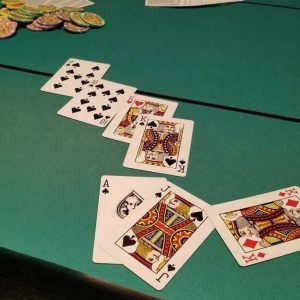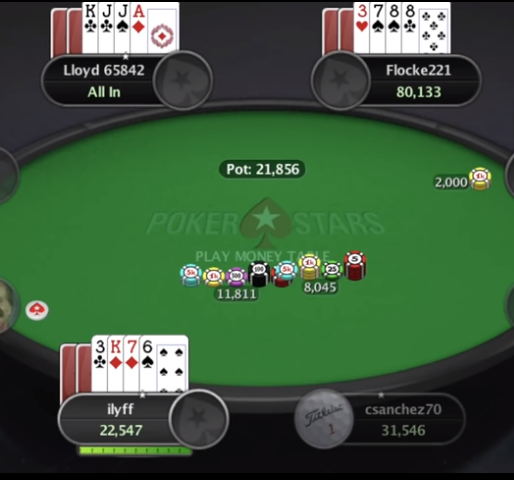Seven Card Stud Strategy – Sixth Street

For the last few weeks, we’ve covered various Seven Card Stud strategy topics, and we are now in the home stretch. Sixth Street is the equivalent of the turn in Texas Hold’em, but is played a lot differently.
Once you get to Sixth Street, decisions become easier provided that you’ve been paying attention the entire time. Today we will look at how you should be playing Sixth Street in Seven Card Stud.
Take Advantage of the Information Available
Once you arrive at Fifth Street, you know almost 60% of the cards you opponent is holding. Also, you know the cards that have been folded in the hands of other opponents. You can combine this information with what you’re holding to put your opponent on a range of hands.
By this point, you should know whether or not your opponent is drawing, is playing two pair, or is merely trying to bluff his way to a pot. At the same time, you should be taking advantage of the information out there about your hand.
If you’re sitting there with a likely draw to a straight or flush and few of your outs have hit the board, this may be a good time to represent a made hand. An observant Stud player will recognize what you’re representing and act accordingly.
When they play back at your, you know they have a hand. A drawing hand that fails to play back is likely still drawing and you can take advantage of this information on the river. In some cases, you may be able to force weaker hands or bad players to fold on Sixth Street with a timely bet.
Extract Value or Save Bets
Your betting actions on Sixth Street are going to largely center around either extracting maximum value for your bets or saving bets. By saving bets, I mean you are looking to draw or continue for as cheap as possible. If you’re drawing to a flush, this means no worse than check-calling a bet When you have a made hand, you are going to be to try and extra an extra bet before the river.
Your decision will be based on the information collected and the hand that your opponent likely has. Don’t go nuts trying to bluff an opponent on Sixth Street, because they are likely not going to fold.

One Bet to See Two Cards
The reason why bluffing rarely works on Sixth Street is that you and your opponent are often getting pot odds to make the call. After Fifth Street, you only have to call one bet to get to the river.
If you have 3 to 4 big bets already in the pot and bet, your opponent is getting 5 to 1 on his money to make the call. Unless he’s drawing to a gutshot draw and saw his outs come out on Sixth Street, he or she is going to call.
The same will hold true for you. Many times you’re going to make a Sixth Street call to see the river because you have pot odds. Sometimes you will do so even when you think you’re behind. The exceptions will be when it’s clear you’re grossly behind, such as someone with an open pair on Fifth Street catching open trips on Sixth Street.
Low Hand Has Positional Advantage For Last Two Streets
One time where it’s good to be the lower hand is when you reach Sixth Street. That’s because you will have the positional advantage for the last two Street. The high hand must act first, so this gives you a chance to take a free card when necessary or to bet for value.
High hands with three cards to a draw or an open pair will likely lead out on Sixth Street, so make sure you can beat what they are representing before playing back.
Next week, we will take a look at Seventh Street, also called the River in Stud. Come back and find out the best way to play the river in Stud poker.
